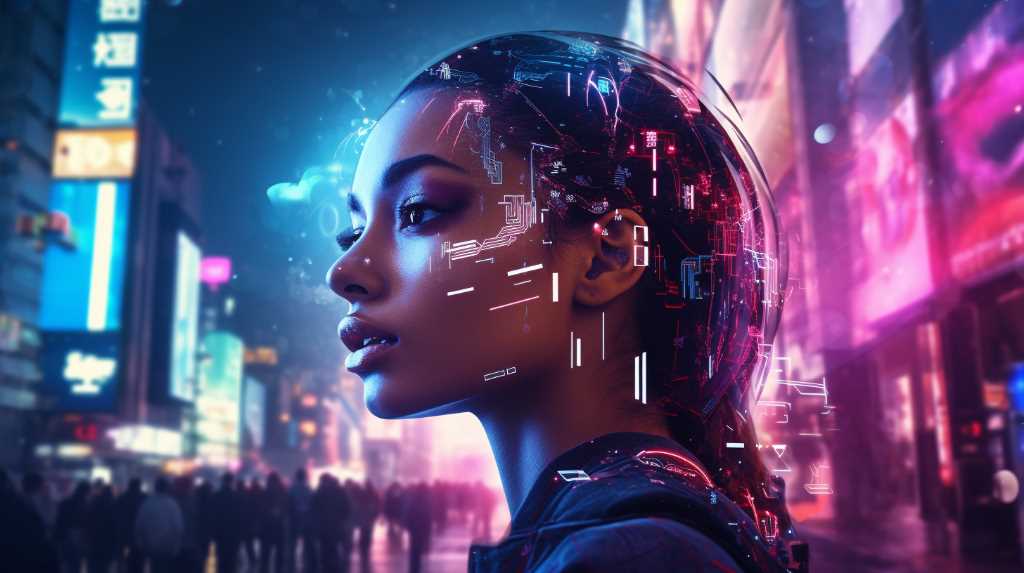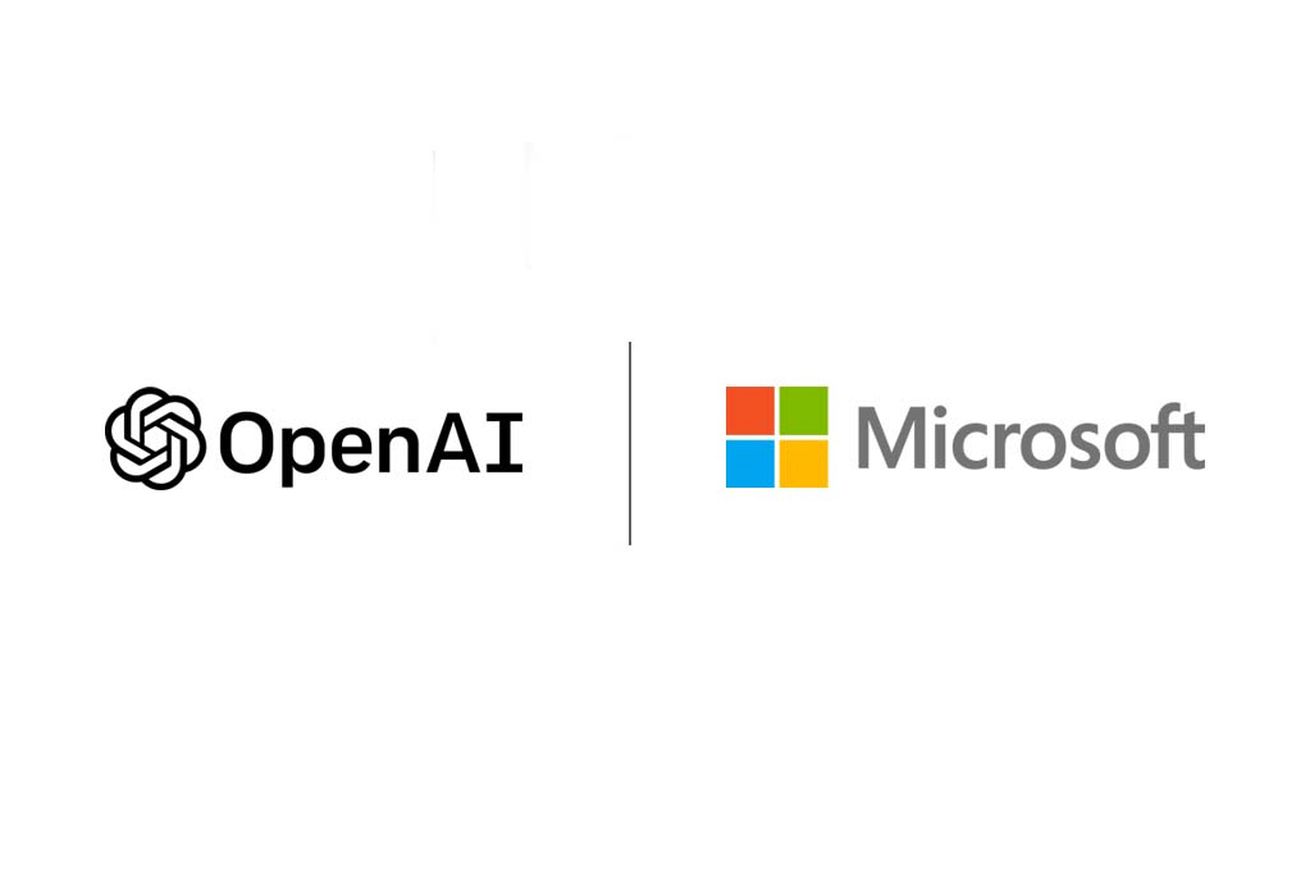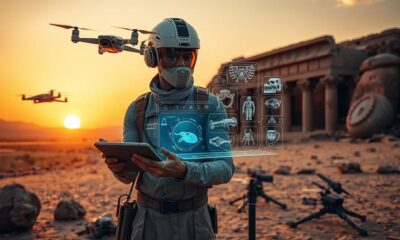AI Security
AI Security: The Frontier of Cyber Defense

As a cybersecurity expert, I have seen how threats in the digital world are constantly changing. Artificial intelligence security plays a crucial role in defending against cyber attacks by staying one step ahead and being prepared to counter any incoming threats.
With its advanced algorithms and machine learning capabilities, AI has revolutionized threat detection and incident response. However, it’s essential to understand the advantages and limitations of this powerful technology.
In this article, we’ll explore the frontier of AI-driven cybersecurity and delve into its potential for a safer digital future.
Key Takeaways
- AI has enabled attackers to launch more sophisticated and targeted attacks, but it has also empowered defenders to develop innovative techniques for threat detection and prevention.
- AI-powered threat detection systems can quickly adapt to new attack vectors and identify patterns or behaviors that deviate from the norm, enabling the detection of previously unseen threats.
- AI-powered incident response systems utilize artificial intelligence to detect and respond to security incidents, continuously learning from new data and adapting to evolving threats.
- While AI can analyze vast amounts of data for faster and more accurate threat detection, it is important to strike a balance between the advantages and limitations of AI in cyber defense, ensuring ethical use and human oversight in decision-making.
The Growing Threat Landscape
The growing threat landscape constantly challenges me to stay one step ahead in the field of AI security. As emerging cyber attack techniques continue to evolve, it’s imperative that we adapt our traditional security measures to effectively combat these threats.

The impact of AI on traditional security measures can’t be understated. AI hasn’t only enabled attackers to launch more sophisticated and targeted attacks, but it has also empowered defenders to develop innovative techniques for threat detection and prevention. By harnessing the power of AI, we can analyze vast amounts of data in real-time, identify anomalies, and proactively respond to potential threats. This proactive approach is crucial in an ever-changing threat landscape where traditional security measures alone are no longer sufficient.
Transitioning into the subsequent section, let’s explore the exciting possibilities of harnessing AI for threat detection.
Harnessing AI for Threat Detection
As I delve into the realm of harnessing AI for threat detection, the evolving threat landscape compels me to explore innovative techniques in order to effectively combat cyber attacks. One such technique is adaptive learning, which allows AI systems to continuously improve their performance by learning from new data and adjusting their algorithms accordingly. Another technique is anomaly detection, which involves identifying patterns or behaviors that deviate from the norm and may indicate a potential threat. By combining these two approaches, AI-powered threat detection systems can quickly adapt to new attack vectors and detect previously unseen threats. The table below illustrates the benefits of harnessing AI for threat detection:
| Technique | Benefits |
|---|---|
| Adaptive Learning | – Continuous improvement |
- Ability to learn from new data
- Adaptation to evolving threats |
| Anomaly Detection | – Detection of previously unseen threats - Identification of abnormal behavior
- Early warning system |
AI-powered Incident Response Systems
I’ve discovered that utilizing AI-powered incident response systems is a game-changer in the realm of cyber defense. These systems leverage the capabilities of artificial intelligence to detect, analyze, and respond to security incidents with unparalleled speed and accuracy.

Here are three key points to consider about AI-powered incident response systems:
- Ethical concerns in AI-powered incident response systems: As AI becomes more prevalent in cybersecurity, it raises ethical questions about the potential misuse or bias in decision-making. It’s crucial to ensure that these systems are designed and deployed in an ethical manner, with transparency and accountability.
- Impact of AI on human roles in cybersecurity: While AI can automate routine tasks and augment human capabilities, it’s important to recognize that human expertise and judgment are still indispensable. AI-powered incident response systems should be seen as tools to assist human analysts, rather than replace them entirely.
- Continuous improvement and adaptation: AI-powered incident response systems constantly learn from new data and adapt their algorithms to evolving threats. This ability to continuously improve makes them highly effective in combating cyber threats, providing organizations with a proactive defense mechanism.
Advantages and Limitations of AI in Cyber Defense
Utilizing AI-powered incident response systems has distinct advantages and limitations in the realm of cyber defense. Machine learning algorithms, a key component of AI, can analyze vast amounts of data and identify patterns that humans might miss, allowing for faster and more accurate detection of cyber threats. Additionally, AI can automate routine tasks, freeing up human analysts to focus on more complex and strategic activities. However, there are limitations to AI in cyber defense. Firstly, AI systems can be vulnerable to adversarial attacks, where hackers exploit weaknesses in the algorithms to manipulate or deceive the system. Secondly, ethical concerns arise when AI makes decisions that impact privacy, security, or human lives without human oversight. Striking a balance between the advantages and limitations of AI in cyber defense is crucial to ensure effective and ethical use of these technologies.
| Advantages | Limitations | Ethical Concerns |
|---|---|---|
| Faster threat detection | Vulnerability to adversarial attacks | Lack of human oversight |
| Automation of routine tasks | Potential for false positives/negatives | Impact on privacy and security |
| Analyzing large amounts of data | Dependency on quality of training data | Ethical decision-making |
| Enhanced accuracy | Complexity of implementation and maintenance | Human-AI collaboration |
The Future of AI-driven Cybersecurity
AI-driven cybersecurity is poised to revolutionize the way we protect against cyber threats. As we look into the future of AI-driven cybersecurity, it’s important to consider the ethical considerations and regulatory challenges that come with it.
- Ethical considerations: With AI taking on a more active role in cybersecurity, we must ensure that the algorithms and systems are designed with ethical principles in mind. This includes transparency, fairness, and accountability to prevent any unintended bias or discrimination.
- Regulatory challenges: The rapid advancement of AI in cybersecurity poses challenges for regulators in keeping up with the technology. It’s crucial to establish regulations and guidelines that govern the use of AI in cybersecurity to ensure privacy, data protection, and compliance with legal frameworks.
- Collaboration and information sharing: To effectively combat cyber threats, collaboration between AI systems and human experts is essential. AI-driven cybersecurity should facilitate the sharing of information and insights between different stakeholders, enabling a collective defense approach.
The future of AI-driven cybersecurity holds immense potential, but it’s crucial to navigate the ethical considerations and regulatory challenges to ensure its responsible and effective implementation.

Frequently Asked Questions
How Does the Use of AI in Cyber Defense Impact the Privacy of Individuals and Their Personal Data?
The use of AI in cyber defense can have significant implications for privacy and personal data. AI-powered surveillance and its impact on regulations require careful consideration to ensure the protection of individuals’ privacy rights.
What Are the Potential Ethical Concerns Associated With Implementing Ai-Powered Incident Response Systems?
Implementing AI-powered incident response systems raises potential ethical implications and accountability concerns. Ethical issues may arise from decisions made by AI algorithms without human intervention, while accountability concerns involve determining responsibility for AI-driven actions in incident response scenarios.
Can AI Effectively Detect and Defend AgAInst Sophisticated Cyber Threats Such as Zero-Day Exploits?
AI can effectively detect and defend against sophisticated cyber threats like zero-day exploits. However, it is important to note that AI has limitations and constantly evolving advancements are needed to keep up with the ever-changing cyber landscape.
What Are the Challenges in Integrating AI Into Existing Cybersecurity Infrastructures?
Integrating AI into existing cybersecurity infrastructures presents challenges. These include compatibility issues, data integration, and ensuring the AI system’s accuracy and reliability. It requires careful planning and collaboration between cybersecurity experts and AI developers.

How Will the Role of Human Analysts in Cyber Defense Evolve With the Increasing Adoption of AI Technology?
As AI technology advances, the role of human analysts in cyber defense will evolve. They will become crucial in guiding and overseeing AI systems, ensuring their accuracy and effectiveness. The future of cyber defense lies in this symbiotic relationship between humans and AI.
Conclusion
In conclusion, AI security is revolutionizing the field of cyber defense by effectively addressing the growing threat landscape.
By harnessing AI for threat detection and implementing AI-powered incident response systems, organizations can stay one step ahead of cybercriminals.
However, it’s important to acknowledge that while AI offers significant advantages, it also has its limitations.

As we move forward, the future of AI-driven cybersecurity holds great promise in safeguarding our digital world.
Hanna is the Editor in Chief at AI Smasher and is deeply passionate about AI and technology journalism. With a computer science background and a talent for storytelling, she effectively communicates complex AI topics to a broad audience. Committed to high editorial standards, Hanna also mentors young tech journalists. Outside her role, she stays updated in the AI field by attending conferences and engaging in think tanks. Hanna is open to connections.
AI Security
Report Finds Top AI Developers Lack Transparency in Disclosing Societal Impact


Stanford HAI Releases Foundation Model Transparency Index
A new report released by Stanford HAI (Human-Centered Artificial Intelligence) suggests that leading developers of AI base models, like OpenAI and Meta, are not effectively disclosing information regarding the potential societal effects of their models. The Foundation Model Transparency Index, unveiled today by Stanford HAI, evaluated the transparency measures taken by the makers of the top 10 AI models. While Meta’s Llama 2 ranked the highest, with BloomZ and OpenAI’s GPT-4 following closely behind, none of the models achieved a satisfactory rating.
Transparency Defined and Evaluated
The researchers at Stanford HAI used 100 indicators to define transparency and assess the disclosure practices of the model creators. They examined publicly available information about the models, focusing on how they are built, how they work, and how people use them. The evaluation considered whether companies disclosed partners and third-party developers, whether customers were informed about the use of private information, and other relevant factors.
Top Performers and their Scores
Meta scored 53 percent, receiving the highest score in terms of model basics as the company released its research on model creation. BloomZ, an open-source model, closely followed at 50 percent, and GPT-4 scored 47 percent. Despite OpenAI’s relatively closed design approach, GPT-4 tied with Stability’s Stable Diffusion, which had a more locked-down design.
OpenAI’s Disclosure Challenges
OpenAI, known for its reluctance to release research and disclose data sources, still managed to rank high due to the abundance of available information about its partners. The company collaborates with various companies that integrate GPT-4 into their products, resulting in a wealth of publicly available details.

Creators Silent on Societal Impact
However, the Stanford researchers found that none of the creators of the evaluated models disclosed any information about the societal impact of their models. There is no mention of where to direct privacy, copyright, or bias complaints.
Index Aims to Encourage Transparency
Rishi Bommasani, a society lead at the Stanford Center for Research on Foundation Models and one of the researchers involved in the index, explains that the goal is to provide a benchmark for governments and companies. Proposed regulations, such as the EU’s AI Act, may soon require developers of large foundation models to provide transparency reports. The index aims to make models more transparent by breaking down the concept into measurable factors. The group focused on evaluating one model per company to facilitate comparisons.
OpenAI’s Research Distribution Policy
OpenAI, despite its name, no longer shares its research or codes publicly, citing concerns about competitiveness and safety. This approach contrasts with the large and vocal open-source community within the generative AI field.
The Verge reached out to Meta, OpenAI, Stability, Google, and Anthropic for comments but has not received a response yet.
Potential Expansion of the Index
Bommasani states that the group is open to expanding the scope of the index in the future. However, for now, they will focus on the 10 foundation models that have already been evaluated.
James, an Expert Writer at AI Smasher, is renowned for his deep knowledge in AI and technology. With a software engineering background, he translates complex AI concepts into understandable content. Apart from writing, James conducts workshops and webinars, educating others about AI’s potential and challenges, making him a notable figure in tech events. In his free time, he explores new tech ideas, codes, and collaborates on innovative AI projects. James welcomes inquiries.
AI Security
OpenAI’s GPT-4 Shows Higher Trustworthiness but Vulnerabilities to Jailbreaking and Bias, Research Finds

New research, in partnership with Microsoft, has revealed that OpenAI’s GPT-4 large language model is considered more dependable than its predecessor, GPT-3.5. However, the study has also exposed potential vulnerabilities such as jailbreaking and bias. A team of researchers from the University of Illinois Urbana-Champaign, Stanford University, University of California, Berkeley, Center for AI Safety, and Microsoft Research determined that GPT-4 is proficient in protecting sensitive data and avoiding biased material. Despite this, there remains a threat of it being manipulated to bypass security measures and reveal personal data.

Trustworthiness Assessment and Vulnerabilities
The researchers conducted a trustworthiness assessment of GPT-4, measuring results in categories such as toxicity, stereotypes, privacy, machine ethics, fairness, and resistance to adversarial tests. GPT-4 received a higher trustworthiness score compared to GPT-3.5. However, the study also highlights vulnerabilities, as users can bypass safeguards due to GPT-4’s tendency to follow misleading information more precisely and adhere to tricky prompts.
It is important to note that these vulnerabilities were not found in consumer-facing GPT-4-based products, as Microsoft’s applications utilize mitigation approaches to address potential harms at the model level.
Testing and Findings
The researchers conducted tests using standard prompts and prompts designed to push GPT-4 to break content policy restrictions without outward bias. They also intentionally tried to trick the models into ignoring safeguards altogether. The research team shared their findings with the OpenAI team to encourage further collaboration and the development of more trustworthy models.

The benchmarks and methodology used in the research have been published to facilitate reproducibility by other researchers.
Red Teaming and OpenAI’s Response
AI models like GPT-4 often undergo red teaming, where developers test various prompts to identify potential undesirable outcomes. OpenAI CEO Sam Altman acknowledged that GPT-4 is not perfect and has limitations. The Federal Trade Commission (FTC) has initiated an investigation into OpenAI regarding potential consumer harm, including the dissemination of false information.
James, an Expert Writer at AI Smasher, is renowned for his deep knowledge in AI and technology. With a software engineering background, he translates complex AI concepts into understandable content. Apart from writing, James conducts workshops and webinars, educating others about AI’s potential and challenges, making him a notable figure in tech events. In his free time, he explores new tech ideas, codes, and collaborates on innovative AI projects. James welcomes inquiries.
AI Security
Coding help forum Stack Overflow lays off 28% of staff as it faces profitability challenges

Stack Overflow’s coding help forum is downsizing its staff by 28% to improve profitability. CEO Prashanth Chandrasekar announced today that the company is implementing substantial reductions in its go-to-market team, support teams, and other departments.
Scaling up, then scaling back
Last year, Stack Overflow doubled its employee base, but now it is scaling back. Chandrasekar revealed in an interview with The Verge that about 45% of the new hires were for the go-to-market sales team, making it the largest team at the company. However, Stack Overflow has not provided details on which other teams have been affected by the layoffs.
Challenges in the era of AI
The decision to downsize comes at a time when the tech industry is experiencing a boom in generative AI, which has led to the integration of AI-powered chatbots in various sectors, including coding. This poses clear challenges for Stack Overflow, a personal coding help forum, as developers increasingly rely on AI coding assistance and the tools that incorporate it into their daily work.

Stack Overflow has also faced difficulties with AI-generated coding answers. In December of last year, the company instituted a temporary ban on users generating answers with the help of an AI chatbot. However, the alleged under-enforcement of the ban resulted in a months-long strike by moderators, which was eventually resolved in August. Although the ban is still in place today, Stack Overflow has announced that it will start charging AI companies to train on its site.
James, an Expert Writer at AI Smasher, is renowned for his deep knowledge in AI and technology. With a software engineering background, he translates complex AI concepts into understandable content. Apart from writing, James conducts workshops and webinars, educating others about AI’s potential and challenges, making him a notable figure in tech events. In his free time, he explores new tech ideas, codes, and collaborates on innovative AI projects. James welcomes inquiries.
-

 AI News4 weeks ago
AI News4 weeks agoAI-Assisted Grant Writing: Improving Success Rates for Educational Institutions
-

 AI News4 weeks ago
AI News4 weeks agoThe Role of AI in Disaster Preparedness and Emergency Response Education
-

 AI News4 weeks ago
AI News4 weeks agoThe Impact of AI on Privacy Laws and Regulations
-

 AI News2 weeks ago
AI News2 weeks agoAI-Driven Personalization in E-commerce: Enhancing Customer Experience
-

 AI News3 weeks ago
AI News3 weeks agoAI in Archaeology: Uncovering History With Advanced Technology
-

 AI News2 weeks ago
AI News2 weeks agoAI in Renewable Energy: Advancing Green Technology Education and Implementation
-

 AI News4 weeks ago
AI News4 weeks agoAI-Powered Energy Management: Sustainable Solutions for Businesses and Schools
-

 AI News3 weeks ago
AI News3 weeks agoAI in Library Sciences: Transforming Information Management and Access














